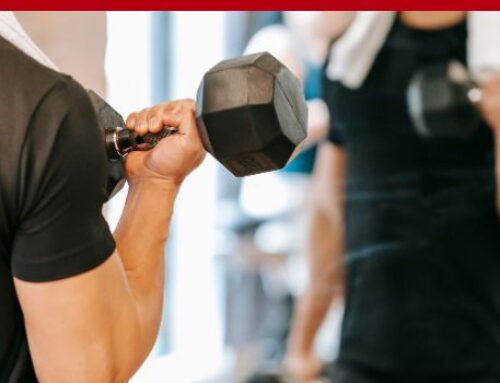
253: How To Stay Lean, Strong And Pain-Free After 40 with Dr. John Rusin
Today’s Guest
Dr. John Rusin
In today’s episode, Ted interviews physical therapist, strength and conditioning coach, Dr. John Rusin. With more than a decade of elite-level training experience and advanced degrees in both exercise science and physical therapy, Dr. Rusin has developed performance, regeneration, and aesthetics programs for some of the world’s best strength, power, and endurance athletes. Dr. Rusin’s present and past client list include MLB All-Stars, NFL All-Pros, Olympic Gold, Bronze and Silver Medalists, World-Record-Holding Powerlifters, Elite Bodybuilders and Figure Competitors, All-World IronMan Triathletes, and top professional athletes from eight of the major American professional sports leagues.
He is also an internationally recognized strength coach, speaker, and writer, whose work has been popularized throughout the sports performance and fitness industries in some of the most prestigious media outlets in our industry such as Men’s Fitness, Stack Magazine, and Muscle&Strength, to name a few.
You’ll Learn
- How John started his strengthening and conditioning journey (6:31)
- What got him into physical therapy (8:00 )
- Why most people start to exercise later in life (9:08)
- 3 Ways to stay motivated to exercise regularly (13:25)
- The secret of why the right movements are more important than lifting heavy weights (13:42)
- How to deadlift with proper form (15:23)
- The #1 Tip to prevent post-workout soreness (18:11)
- How to achieve muscle definition without overdoing it (25:14)
- Exercise, neurotransmitters and motivation to exercise (29:12)
- His favorite mobility and stretching routines (32:15)
- Is overstretching bad? (38:18)
- The most powerful and versatile training method (42:09)
- Final advice from John (56:24)
Like this show? Please leave us a review here — even one sentence helps! Consider including your Instagram handle so we can thank you personally!
Connect with Dr. John Rusin:
Ted’s Take-Aways
1.Make sure you’re learning from the right people in the fitness industry.
I know that can be tough because there are so many people out there and it’s hard to tell when someone has great marketing but they’re not good. Or they have poor quality marketing but they’re really good. That’s why I have guys like John on the show. He is a solid professional to learn things from although I follow a bit of a different perspective.
2. If you are chronically getting injured you are not doing things right.
You should not be chronically injured or getting injured when you go to the gym. Now, if you’re playing a sport, then injuries happen in competition while pushing the limits. If you’re you’re training in a controlled environment like the gym, you should not be getting injured. The only exception to that would probably be a method like CrossFit—where people treat exercise as a sport.
Again, that is nothing against Crossfit–although I do have my thoughts about the good and bad aspects of that method– but that’s an example of where you’re pushing the limits and getting hurt is likely. Powerlifting is another example of where exercise is treated like a sport and the injury rate is higher than casual exercise. But if you’re in there for general fitness and you’re getting hurt, you’re doing yourself a huge disservice because once those little minor nagging injuries become chronic, they become constant obstacles to progress and consistency.
3. Make sure you’re doing some mobility work; make sure you do some flexibility work.
In the interview, we didn’t talk about the distinction between mobility and flexibility. To me, mobility exercises are activation exercises—but that’s just a semantic difference. That’s when you’re activating certain muscles so you achieve a greater control through a larger range of motion of the joint. Make sure you’re doing something in the gym to prepare you to ramp up your nervous system, to warm up your joints and your muscles. That will help you if you are already injured. Or if you’re not, it will help you prevent injuries. Injury prevention is a tough sell for most people because if you’re not injured you just don’t usually care. If you’re currently uninjured, then try to be smart and learn from other people so you don’t have to learn the hard way like many of us have had to with frustrating injuries.
Similar Episodes you may like
About the Show
The Legendary Life is a fun and enlightening look at health fitness, nutrition, biohacking, fat loss, anti-aging, and cutting-edge health advice from celebrity fitness trainer Ted Ryce. Ted’s clientele consists of celebrities, including Richard Branson, Ricky Martin, and Robert Downey Jr., CEOs of multimillion-dollar companies, and other high performers.
He breaks down countless health topics and provides science-backed solutions and the most effective, uncommon strategies to rapidly lose weight, improve your health, and upgrade your physical and mental performance, so you can live the life you deserve.
He breaks it down by providing science-based information so you can clear up the confusion and finally lose weight, fight disease, and live a longer, healthier life.
No guru. No fluff. And no preaching of generic fitness advice here. Along the way, Ted shares his own journey of how he turned great tragedy and loss into success and hope.
Now, his mission is to empower you with the tools and the knowledge you need to live your best life. New episodes every Monday and Friday.





